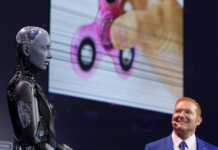
(By Bob McCurdy) The owner of ad agency Coming of Age, Jim Gilmartin, wrote a blog titled, “Don’t Put Ten Pounds Of Copy Into A Five Pound Bag,” and as the title implies, he believes when it comes to copy that “less is more.” But he also touched on another concept, “conditional positioning,” which plays to a unique strength of radio.
Two copy concepts in fact were addressed in the blog, “absolute positioning” and “conditional positioning.” An “absolute positioning” copy approach is straightforward and fact-based, while “conditional positioning” avoids bold claims and hyperbole, instead encouraging the listener to interpret the commercial in a more subtle and personalized fashion.
While radio can effectively deliver messaging both ways, it is among the most effective communicating in the “conditional positioning” mode for one counterintuitive reason: It is free from the constriction of visuals.
Gilmartin wrote, “Conditional positioning respects customer autonomy. It projects a willingness to let customers define the message. But, it also makes it possible for more customers to connect with the message because they, not the copywriter, determine what the message means.”
Effective “conditional positioning” requires each listener to “fill in” the blanks, as the messages’ meaning is derived from their own unique personal experiences, resulting in creative co-creation between the copywriter and the listener. The copywriter lays out the commercial plot and the listener fills in the rest. This co-creation is difficult to accomplish in TV as the director provides both the plot and the ending, leaving little to the imagination. So in some ways, when it comes to advertising engagement, the visual can, in fact, constrict.
The dialogue below between PBS’ reporter Neda Ulaby and the director 2011’s much acclaimed silent movie, The Artist, highlights radio’s immersive, co-creation capabilities:
PBS’s Neda Ulaby: Director Michel Hazanavicius thinks every director secretly yearns to make a silent film. It’s cinematic storytelling at its purest. And The Artist is immersive in the same way great radio can be. There’s a sense missing. Your brain fills it in.
Director Michael Hazanavicius: So you do it with your own imagination, with your own ghosts, your own life, your own sounds, your own reference. So it makes the movie much more yours, in a way.
Kind of ironic that a movie with no sound or words highlights one of radio’s key advantages so effectively. Take a second to re-read Hazanavicius’ words. He is describing the world’s first personally addressable medium — radio.
Gilmartin continued, “From creating ads that attempt to push all the features of a product or service to try to meet everyone’s needs and wants, to an ad that pulls the customer into the ad using their imagination.”
A Rod Serling (Twilight Zone) quote reinforces radio’s “imagination” capabilities perfectly: “In radio, you didn’t have a picture, so you had to create one. In radio, if you said, ‘there was a castle on a hill,’ then all of a sudden there were millions of castles built. Each person in his own head created this castle.”
Instead of creating radio commercials that come across like electronic post-it notes in the “absolute positioning” mode, it would be best to take advantage of radio’s unique and unparalleled “conditional positioning” capabilities as radio advertising when done right:
– Is personal and individually addressable.
– Takes people in their minds only to places they have already been.
– Allows each listener to interpret and “see” the commercial uniquely.
– Encourages the listener to fill in the blanks.
– Is about co-creation. The advertiser presents the commercial plot and the listener fills in the rest based upon their personal experience.
Those who understand the power of audio, the human voice, and the English language, and utilize “conditional positioning,” soon discover that radio commercials “affect” and “effect”– a lot.
Bob McCurdy is The Vice President of Sales for The Beasley Media Group and can be reached at [email protected]






Neda Ulaby works for NPR, not PBS. Completely different organizations.
http://www.npr.org/sections/monkeysee/2011/11/22/142601838/in-the-artist-a-silent-look-at-old-hollywood
Here’s an easy way to remember: “Brands that matter Now” Facebook September 2017 and NPR #1 podcast publisher in the US.